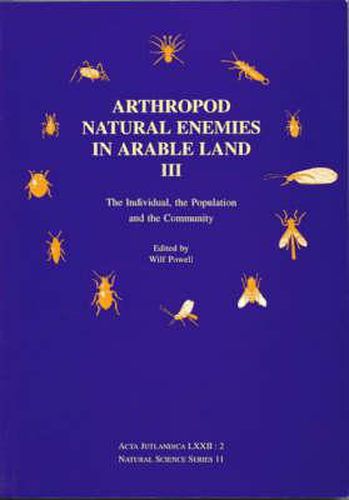Readings Newsletter
Become a Readings Member to make your shopping experience even easier.
Sign in or sign up for free!
You’re not far away from qualifying for FREE standard shipping within Australia
You’ve qualified for FREE standard shipping within Australia
The cart is loading…






This volume is the third of three that reports on the findings of Concerted Action programme, funded by the European Union. The aim of the programme is to increase scientific knowledge about beneficial arthropods. The book presents research and discussion papers which consider the analysis of population processes and modelling of the population dynamics related to beneficial predatorsk, parasitoids and agroecosystems. Various papers are concerned with the influence of behaviour on population dynamics and the effectiveness of natural enemies in pest control, including: the biological control of aphids by ladybird beetles; the effect of dimetoate on ground beetles; and the ability of carabids to detect patches of their aphid prey. Other authors discuss: pest/predator population dynamics; temporal density and activity fluctuations; climate change and population dynamics; simulation of population dynamics; analysis of spatial association between species; and the use of single-species spatially-explicit models. There are few areas of the world where agriculture is so intensive and so highly mechanized as within the European Union. In recent years, agriculturists, as well as consumers have shown increasing concern over the large-scale use of chemical pest control in agriculture, and attention has been directed towards alternative ways in combating harmful insects. The first volume (1995) dealt with population densities and movements of beneficial insects. The second volume (1996) dealt with reproduction and survival rates, and the place of insects within the agricultural ecosystem. The book should be of interest to anyone concerned with agricultural research, pest control or ecological food production.
$9.00 standard shipping within Australia
FREE standard shipping within Australia for orders over $100.00
Express & International shipping calculated at checkout
This volume is the third of three that reports on the findings of Concerted Action programme, funded by the European Union. The aim of the programme is to increase scientific knowledge about beneficial arthropods. The book presents research and discussion papers which consider the analysis of population processes and modelling of the population dynamics related to beneficial predatorsk, parasitoids and agroecosystems. Various papers are concerned with the influence of behaviour on population dynamics and the effectiveness of natural enemies in pest control, including: the biological control of aphids by ladybird beetles; the effect of dimetoate on ground beetles; and the ability of carabids to detect patches of their aphid prey. Other authors discuss: pest/predator population dynamics; temporal density and activity fluctuations; climate change and population dynamics; simulation of population dynamics; analysis of spatial association between species; and the use of single-species spatially-explicit models. There are few areas of the world where agriculture is so intensive and so highly mechanized as within the European Union. In recent years, agriculturists, as well as consumers have shown increasing concern over the large-scale use of chemical pest control in agriculture, and attention has been directed towards alternative ways in combating harmful insects. The first volume (1995) dealt with population densities and movements of beneficial insects. The second volume (1996) dealt with reproduction and survival rates, and the place of insects within the agricultural ecosystem. The book should be of interest to anyone concerned with agricultural research, pest control or ecological food production.